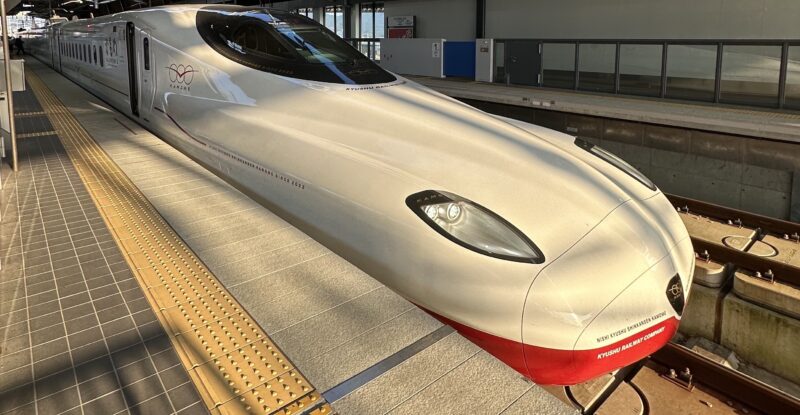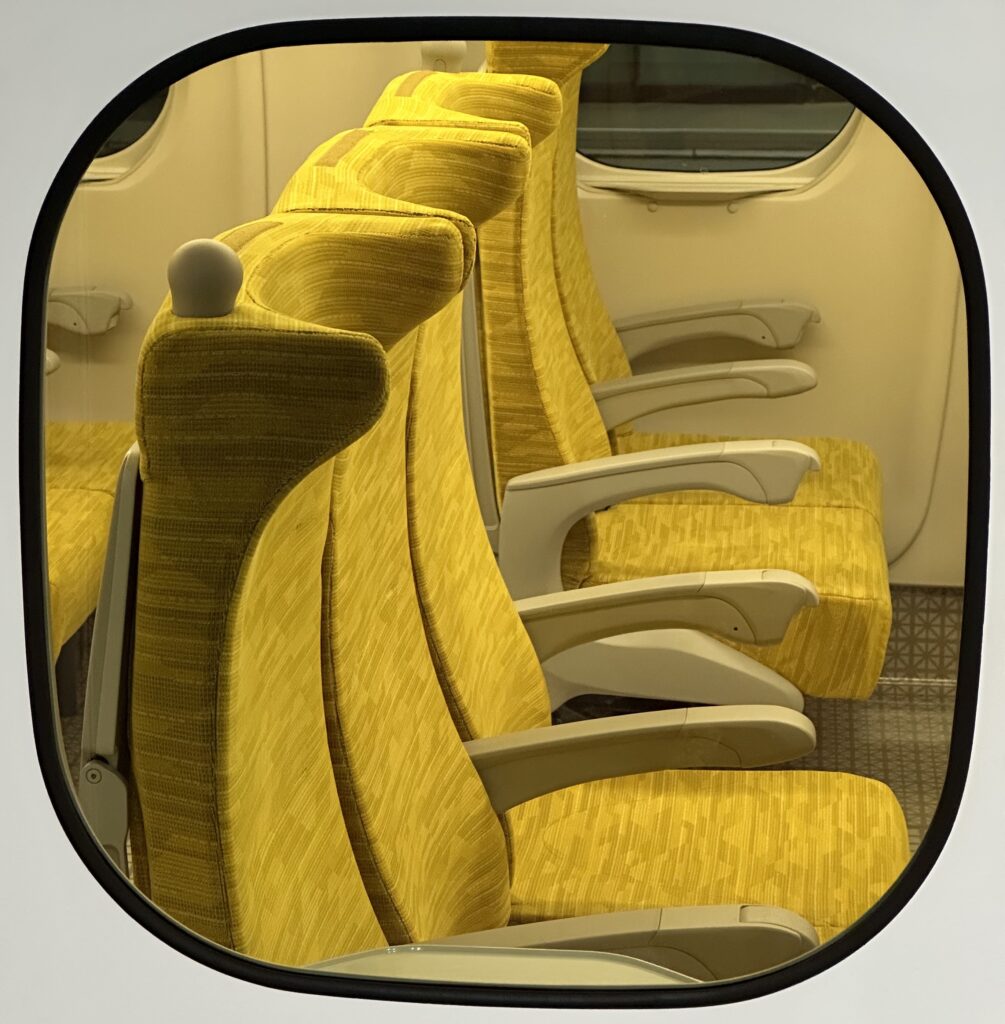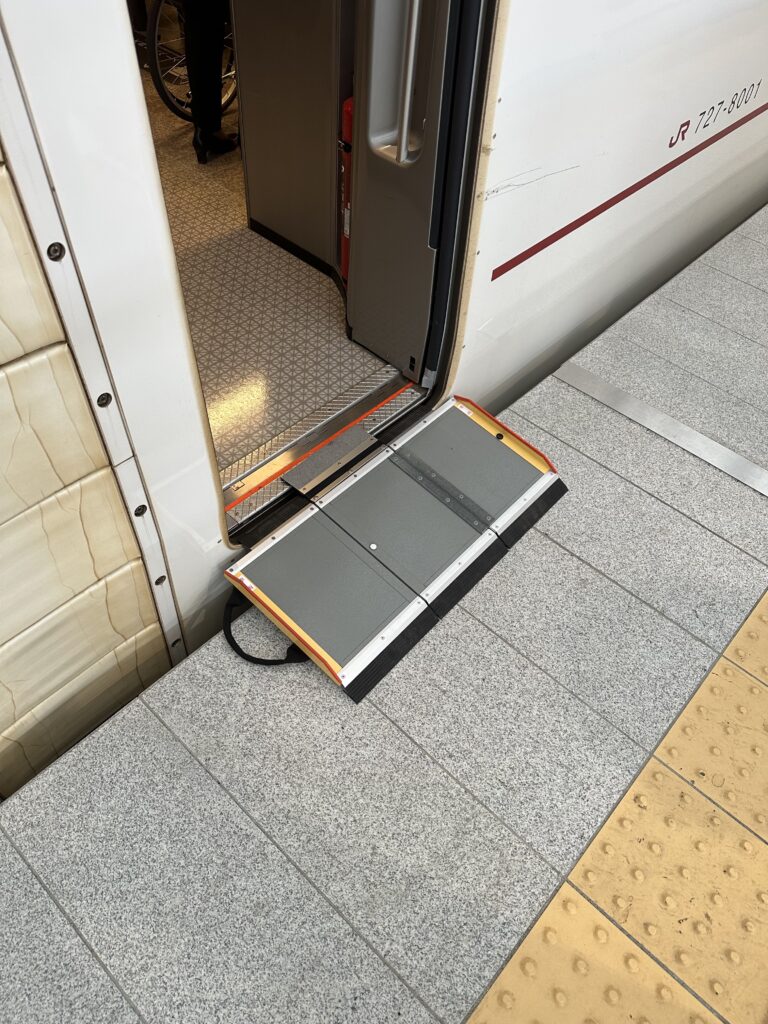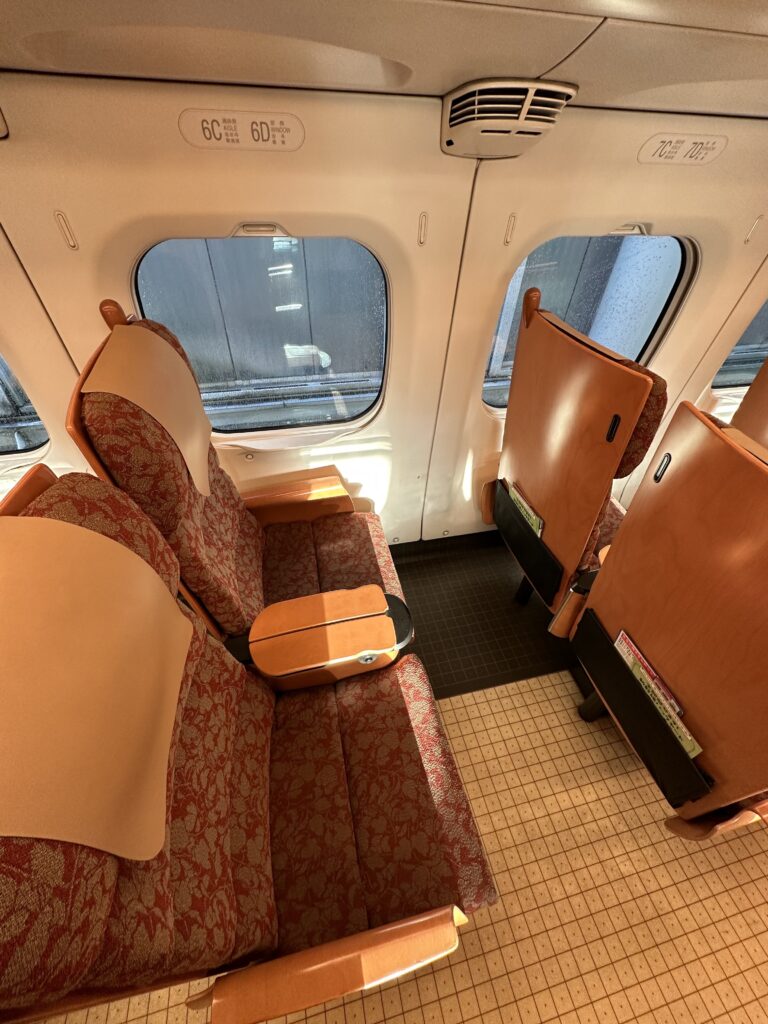 Japan’s newest Shinkansen trains, and the line they run on, are weird and wonderful beasts. The Nishi Kyushu Shinkansen, connecting Nagasaki in the far west of Japan’s westernmost island of Kyushu with the rest of the network, has been mooted for over fifty years, and the first section opened to passengers in September 2022.
Japan’s newest Shinkansen trains, and the line they run on, are weird and wonderful beasts. The Nishi Kyushu Shinkansen, connecting Nagasaki in the far west of Japan’s westernmost island of Kyushu with the rest of the network, has been mooted for over fifty years, and the first section opened to passengers in September 2022.
Designed using a special, shorter version of the very latest N700S trains — the massive sixteen-car, 1,300-passenger trains plying the high-density routes between Tokyo and points west — the Nishi Kyushu Shinkansen is operated by JR Kyushu, and is responsible for services within the island, with a population of nearly 13 million.
The design-focussed six-car trains are branded as Kamome (“Seagull” in English), and for the moment operate on the only section of line completed, between the western terminus at Nagasaki and an interim station at Takeo-Onsen, where passengers change to a conventional-speed narrow-gauge train that relays them over the remaining 50 or so kilometres to the rest of the Shinkansen network at Shin-Tosu.
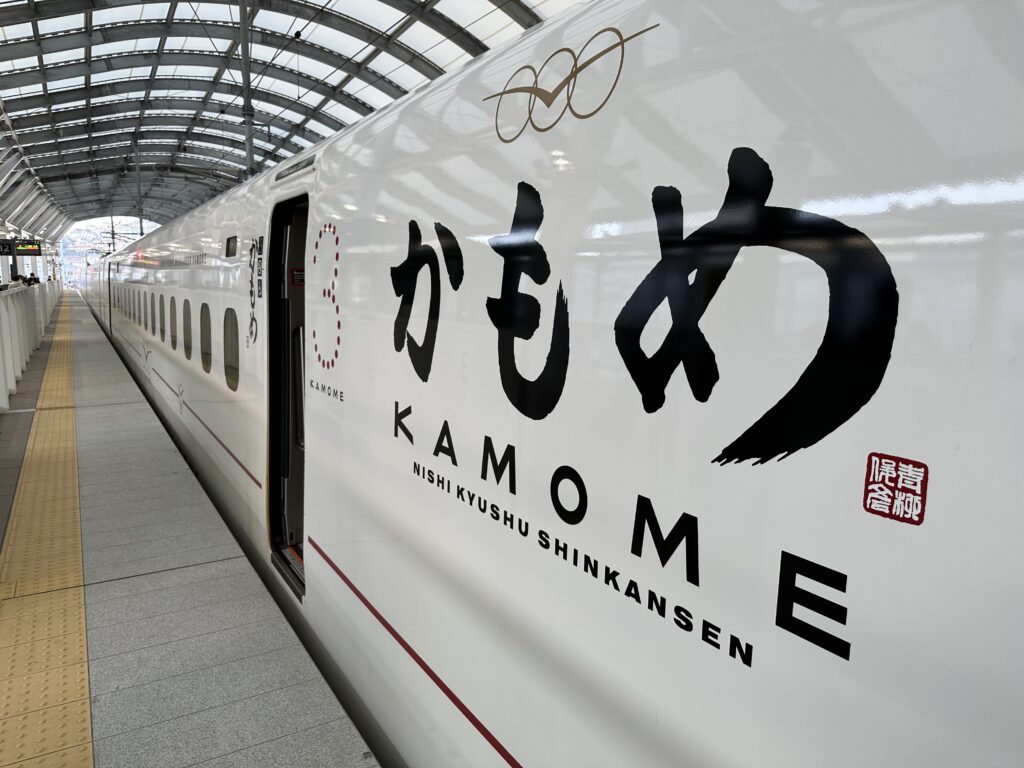
At Nagasaki, the Shinkansen pulls into an entirely renovated and elevated station. Image: John Walton
That “relay” service is the first oddity: local governments in the area between Nagasaki and the existing Shinkansen have prevented completion of the line for a variety of reasons, including the routing and precisely how much of the cost they will bear for a line that brings most of its benefits to points west of them.
As a result, JR Kyushu has designed the second “Relay” operation in its history, where the Shinkansen train pulls up to one side of a platform at Takeo-Onsen and a conventional Relay Kamome train awaits on the other side. Passengers either continue to Fukuoka via conventional train or change to the main Kyushu Shinkansen line at Shin-Tosu for journeys beyond Fukuoka.
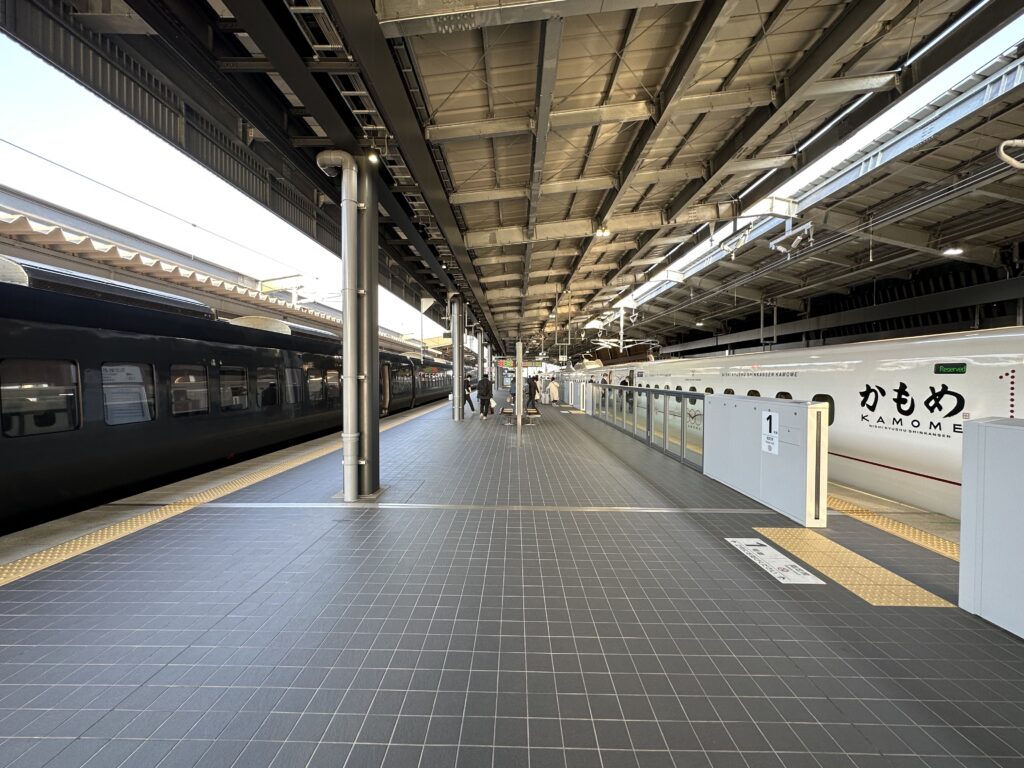
The Relay transfer at Takeo-Onsen is unique, as the Shinkansen pulls up alongside the standard-gauge Relay train. Image: John Walton
It’s fascinating to watch, as up to 400 passengers stream swiftly across the platform from one train to another, and a remarkably efficient way to overcome operational challenges.
JR Kyushu operated a similar arrangement for the Relay Tsubame service when the southern section of the main Kyushu Shinkansen line opened in 2004, before the northern section opened in 2011 for through-running all the way from Osaka to Kagoshima-Chuo.
As yet, there is no date for the completion of the remaining section of the Nishi-Kyushu Shinkansen, so the passenger experience aboard the six-car N700S trains will be in operation for the foreseeable future.
Conceived by Mitooka Eiji, who has had a hand in the conceptualisation of design award-winning trains for JR Kyushu trains over more than thirty years, the six-car Kamome trains offer two seating and design concepts depending on whether passengers have paid the reserved seat fare or are content to sit in the three non-reserved carriages without seat reservations.
There are no “Green Car” business seats on these trains.
The non-reserved fare between Nagasaki and Takeo-Onsen is ¥1310 or about US$10, while the ¥2490 fare for a reserved seat adds about US$19 to the total ticket cost. The benefit: a 2-2 configuration in the reserved cars rather than 2-3 in non-reserved, with deep recline and a stylish design reminiscent of JR Kyushu’s previous Mitooka-designed 800 Series Shinkansen experience, where every carriage features a different colour of elegant seat fabric.
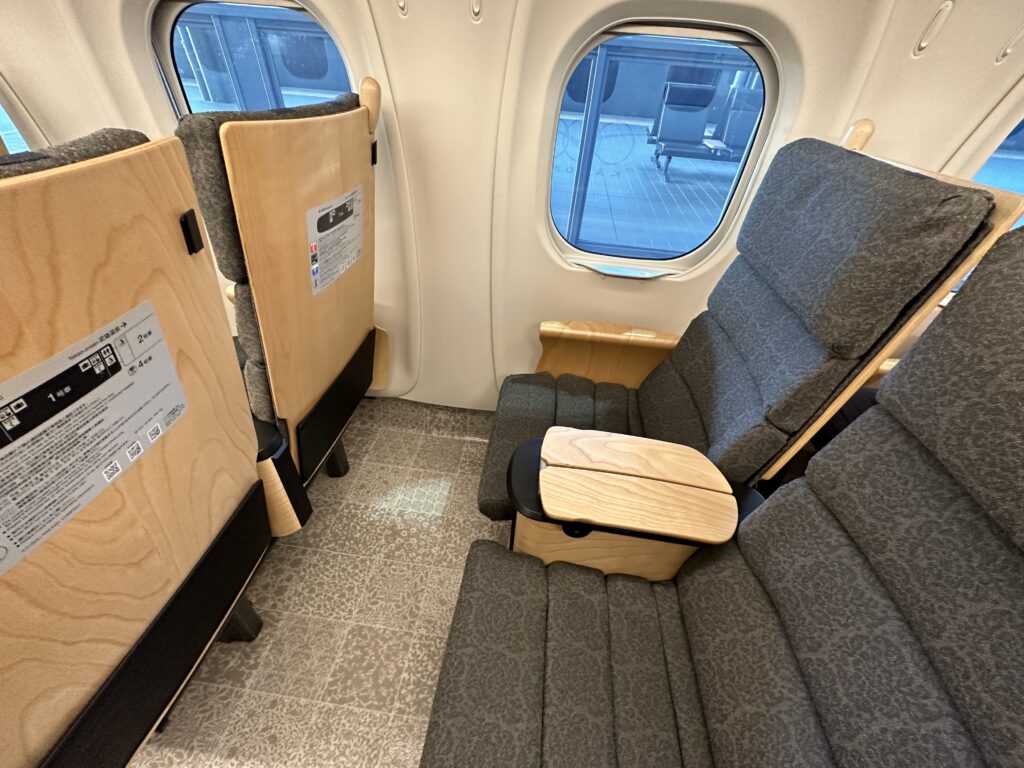
The reserved car seating is spacious, with every car having a different colour of fabric. Image: John Walton
Each seat offers a large table and power outlets, with onboard Internet offering a simple click-to-use process that will delight pre-Covid visitors to Japan who remember complex train Wi-Fi login palavers. The lighting very cleverly brightens over the luggage racks when approaching a station, reminding passengers not to forget belongings, while larger suitcases can be stored in special racks at the end of the cars.
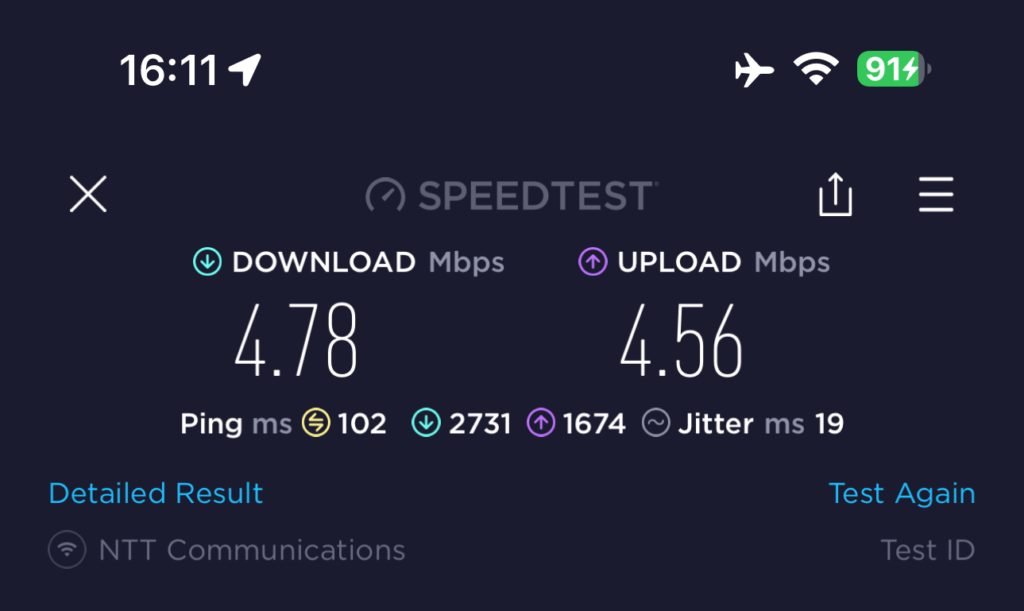
The wifi was free and fast enough given that we were zipping through the countryside at 270 km/h. Image: John Walton
Wheelchair positions are available, as are multi-purpose rooms (for disabled travellers, to feed babies, and for other needs), while facilities include an accessible lavatory featuring options to meet a variety of requirements including baby changing, ostomy bag disposal and more.
All in all, JR Kyushu and designer Mitooka have achieved a remarkably charming interior for the carriages, while the railway company has designed a smart interim solution to the logistical challenges of a Relay service.
Related Articles:
- Inside Japan’s brand new N700S Shinkansen
- Deconstructing the Japanese high speed rail passenger experience
- Shikata ga nai: how a scheduling mixup turned into a moment of joy
- What airlines can learn from Japan’s Shinkansen bullet trains
Featured image credited to John Walton


